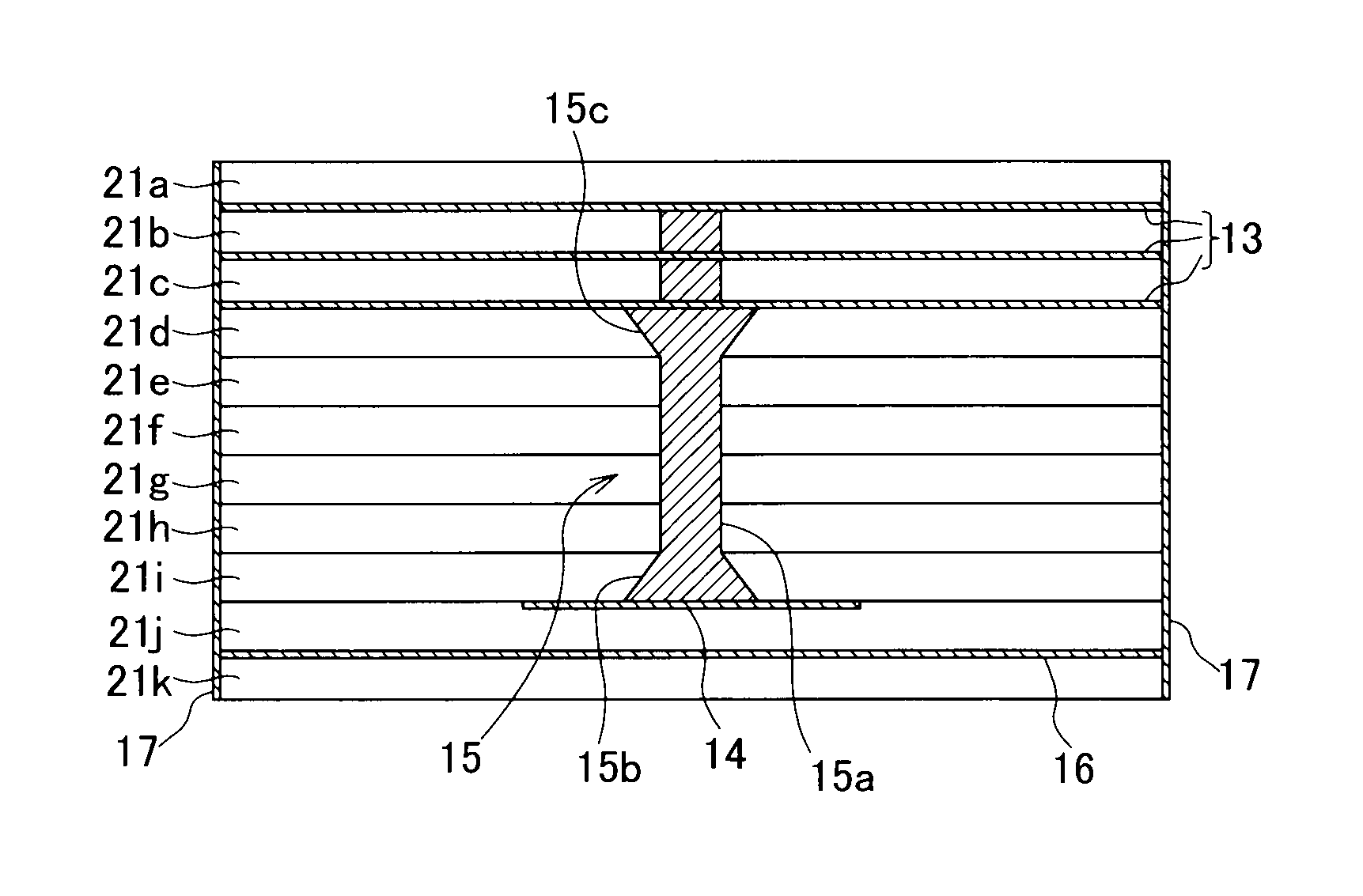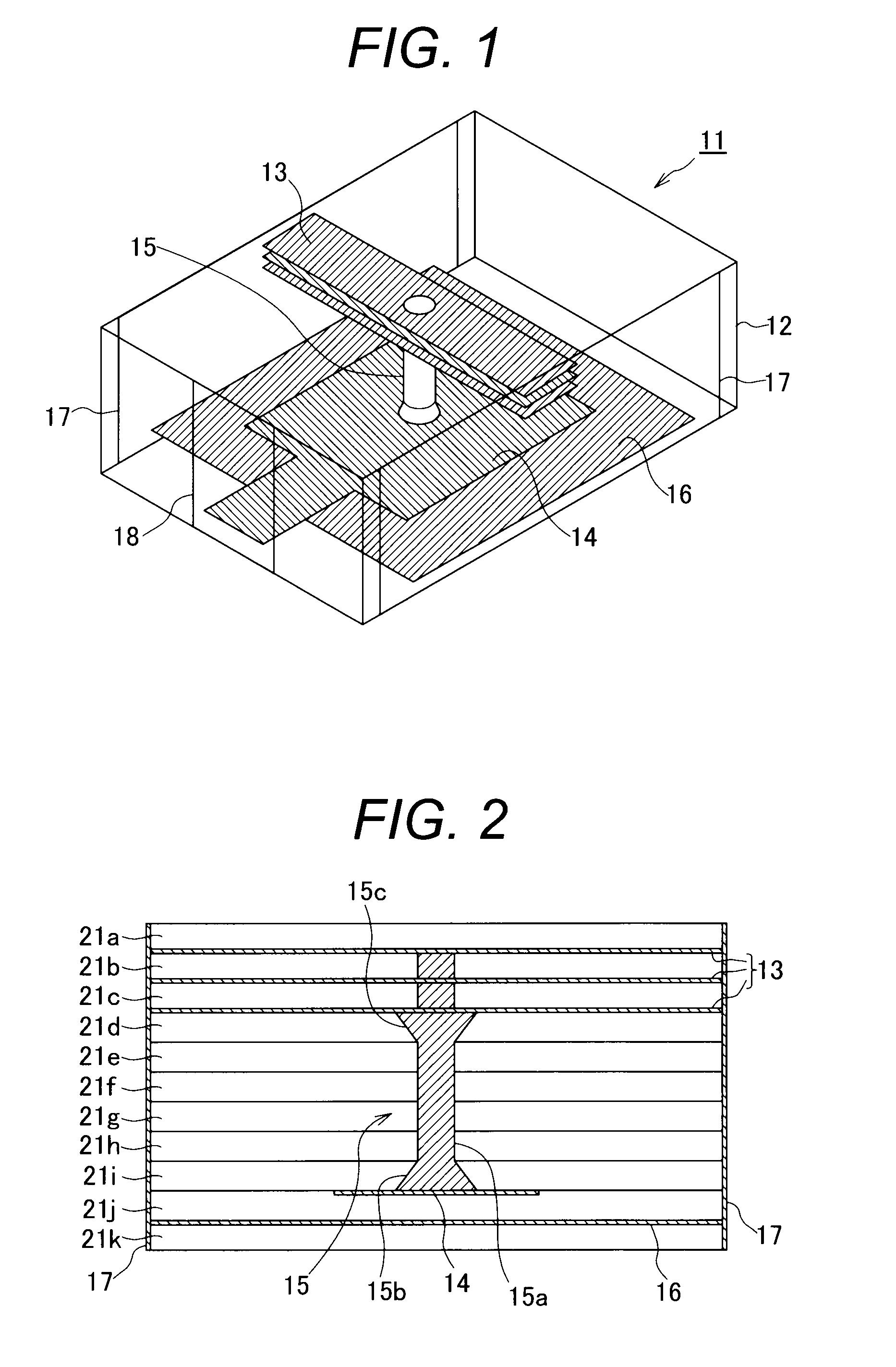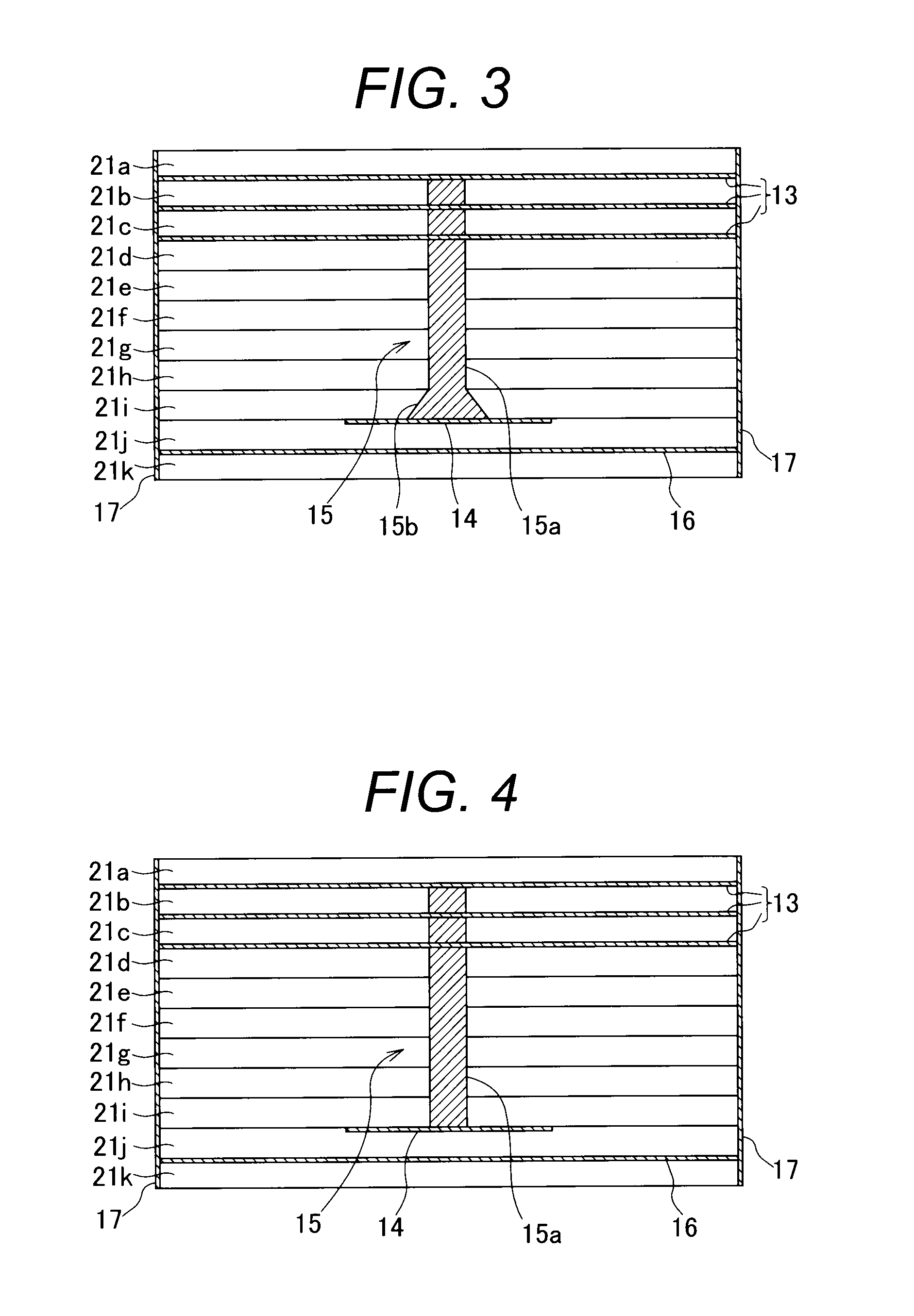Laminated electronic devices with conical vias
a technology of electronic devices and conical vias, applied in the direction of waveguides, waveguide type devices, printed element electric connection formation, etc., can solve the problems of small space available, difficulty in achieving a high q-value, and inability to disclose the relationship between throughhole conductors and resonant characteristics, so as to improve the electric characteristics of electronic devices
- Summary
- Abstract
- Description
- Claims
- Application Information
AI Technical Summary
Benefits of technology
Problems solved by technology
Method used
Image
Examples
Embodiment Construction
[0060]As shown in FIGS. 1 and 2, a laminated electronic device 11 according to one embodiment of the present invention is a filter in the form of chip, which comprises a resonator 13 within a ceramic laminate 12. The laminate 12 comprises a plurality of laminated ceramic green sheets 21a-21k (hereinafter simply called the “sheets” in some cases). The laminate 12 comprises a plurality of internal wiring layers formed on surfaces of the sheets 21a-21k. The resonator 13 is placed on an upper wiring layer of the laminate 12, and is electrically connected to an electrode 14 placed on a lower wiring layer of the laminate 12 through a throughhole conductor 15.
[0061]In addition, the electrode 14 is provided with a ground electrode 16 arranged on a lower layer thereof, and the laminate 12 is provided with lateral terminal electrodes 17, 18 respectively arranged on the peripheral surface thereof. While one resonator 13, and the throughhole conductor 15 and electrodes 14, 16, 17 connected ther...
PUM
| Property | Measurement | Unit |
|---|---|---|
| diameter | aaaaa | aaaaa |
| length | aaaaa | aaaaa |
| diameter | aaaaa | aaaaa |
Abstract
Description
Claims
Application Information
 Login to View More
Login to View More - R&D
- Intellectual Property
- Life Sciences
- Materials
- Tech Scout
- Unparalleled Data Quality
- Higher Quality Content
- 60% Fewer Hallucinations
Browse by: Latest US Patents, China's latest patents, Technical Efficacy Thesaurus, Application Domain, Technology Topic, Popular Technical Reports.
© 2025 PatSnap. All rights reserved.Legal|Privacy policy|Modern Slavery Act Transparency Statement|Sitemap|About US| Contact US: help@patsnap.com



